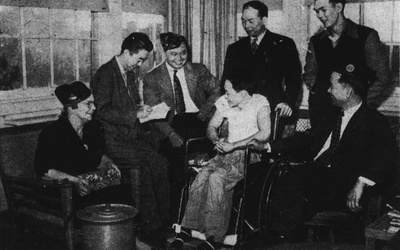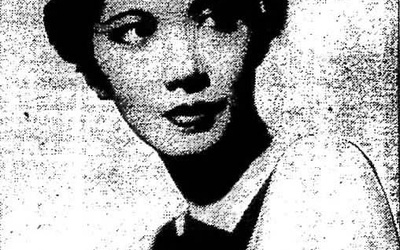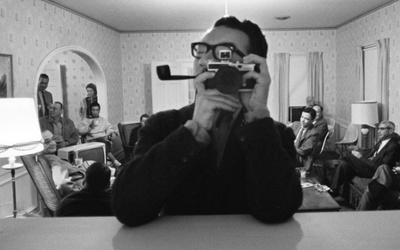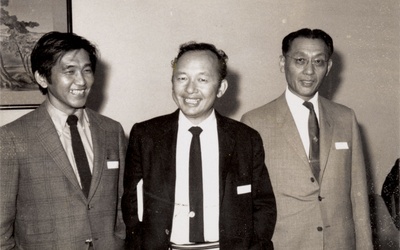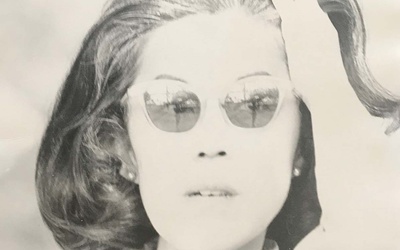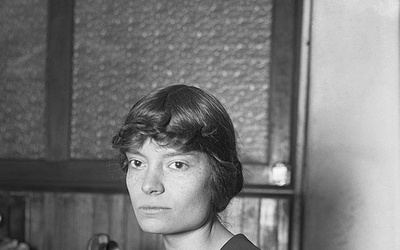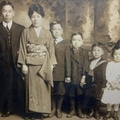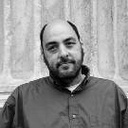
Greg Robinson
@GregGreg Robinson, a native New Yorker, is Professor of History at l'Université du Québec À Montréal, a French-language institution in Montreal, Canada. He is the author of the books By Order of the President: FDR and the Internment of Japanese Americans (Harvard University Press, 2001), A Tragedy of Democracy; Japanese Confinement in North America (Columbia University Press, 2009), After Camp: Portraits in Postwar Japanese Life and Politics (University of California Press, 2012), Pacific Citizens: Larry and Guyo Tajiri and Japanese American Journalism in the World War II Era (University of Illinois Press, 2012), and The Great Unknown: Japanese American Sketches (University Press of Colorado, 2016), as well as coeditor of the anthology Miné Okubo: Following Her Own Road (University of Washington Press, 2008). Robinson is also coeditor of the volume John Okada - The Life & Rediscovered Work of the Author of No-No Boy (University of Washington Press, 2018).
His historical column “The Great Unknown and the Unknown Great,” is a well-known feature of the Nichi Bei Weekly newspaper. Robinson’s latest book is an anthology of his Nichi Bei columns and stories published on Discover Nikkei, The Unsung Great: Portraits of Extraordinary Japanese Americans (University of Washington Press, 2020). It was recognized with an Association for Asian American Studies Book Award for Outstanding Achievement in History Honorable Mention in 2022. He can be reached at robinson.greg@uqam.ca.
Updated March 2022
Stories from This Author
Nunc Pro Tunc: The Story Behind a Phrase
Dec. 19, 2018 • Greg Robinson
It was more than ten years ago that my friend Tetsuden Kashima told me of his dream project. Tetsu, a professor of Sociology at University of Washington and an incisive scholar of wartime Japanese Americans, confided that he and some colleagues had hatched a plan to persuade the University administration to offer honorary degrees to those UW Nisei students of 1941-42 whose studies had been interrupted by their wartime removal, as a gesture of healing and reparation. At that time, …
T. Scott Miyakawa–Part 2: Nisei Academic and Activist
Nov. 30, 2018 • Greg Robinson
Read Part 1 >> If the professional vicissitudes that T. Scott Miyakawa encountered in his earlier years can be said to represent the trials of the Nisei generation, his later career encapsulates the rise of elite Nisei in the postwar period. During these years, Miyakawa became a respected and much-travelled scholar. Like his exact contemporary, S.I. Hayakawa, he refused to be pigeonholed simply as a specialist on Asian Americans, and he threw himself into studying a variety of topics. However, …
T. Scott Miyakawa–Part 1: Struggles of a Young Nisei
Nov. 29, 2018 • Greg Robinson
T. Scott Miyakawa, a sociologist and historian, was one of the most talented and successful of the first generation of Nisei academics. His early career nonetheless dramatizes the various obstacles that Nisei were forced to endure, and the compromises they made to succeed. Born in Los Angeles on November 23, 1906, Tetsuo Scott Miyakawa was the eldest of three children of Yukio Miyakawa, a gardener, and his wife Rin. His younger brother, Tatsuo Arthur Miyakawa, was a graduate of Harvard …
They’ve come a Long Way: Chinese American Support for Japanese Americans in World War II
Nov. 13, 2018 • Greg Robinson
One aspect of Japanese American history that has been increasingly explored in recent times is the complex and revealing question of relations between Nikkei and other racial and religious minority groups over the 20th century. For example, Scott Kurashige’s The Shifting Grounds of Race examines the contrasting conditions facing Japanese Americans and African Americans in Los Angeles, and their varied (and sometimes competing) efforts to overcome discrimination. Ellen Eisenberg’s The First to Cry Down Injustice? covers the reaction of Jewish …
A Family Saga: The Remarkable History of the Ito Sisters of Prewar Chicago
Oct. 30, 2018 • Greg Robinson
One intriguing aspect of Japanese American history is the study of some remarkable families and clans, which have included generations of siblings and cousins who have achieved renown in varying fields. For example, the Oyama family of Sacramento included the businessmen Wesley Oyama and Clem Oyama, writers Mary Oyama Mittwer and Joe Oyama, and the artist Lillie Oyama Sasaki (wife of physician-poet Yasuo Sasaki). The Tajiri family has produced multiple generations of journalists, writers, artists, and photographers, including siblings Larry, …
The Man Behind the Camera: The story of Yoichi Okamoto, LBJ's Shadow
Oct. 11, 2018 • Greg Robinson
Since the early days of the camera, photography has enjoyed a particular vogue in Japan. Long before the stereotyped tourist groups snapping pictures arrived on the international scene, Japanese photographers had demonstrated their talent. Japanese brands such as Olympus, Nikon, Canon, Minolta, Pentax, and Fujifilm, all firms originally founded during the interwar years, came to dominate the international film and camera market by the end of the 20th century. While it is not clear how direct an influence Japanese shutterbugs …
Clifford Uyeda and Ben Kuroki: Nisei Conservatives in the 1960s
Sept. 24, 2018 • Greg Robinson
One extraordinary trend in recent years is the eclipse of Japanese Americans within the Republican Party. Alan Nakanishi, the sole Japanese American Republican in the California Assembly, left office in 2008. Beth Fukumoto of Hawaii, who was House Minority Leader from 2014 to 2017, quit the Republican Party after being unseated from her position, and denounced the intolerance of “party leaders” for dissent within the party (most notably her opposition to Donald Trump’s treatment of women and minorities). In 2018 …
The Epic Lives of Taro and Mitsu Yashima
Sept. 11, 2018 • Greg Robinson , Valerie Matsumoto
One remarkable Japanese American story is that of the epic and tragic partnership of Taro and Mitsu Yashima, an extraordinary couple of artists and freedom fighters. Together they survived years of hardship—imprisonment, exile, poverty, and illness—and made a name for themselves as authors and illustrators. Eventually they reached a point where Mitsu was unable to continue with her husband. Taro Yashima was born Jun Atsushi Iwamatsu on September 21, 1908, the son of a doctor and art collector in the …
Aiko Herzig-Yoshinaga: The Godmother of the Redress Movement
Aug. 27, 2018 • Greg Robinson
Aiko Herzig-Yoshinaga was the scholar-activist who dedicated herself to researching the wartime removal and confinement of Japanese Americans, and who located the evidence of government injustice that helped lead to the passage of the Civil Liberties Act of 1988 and to the victories in the coram nobis cases in federal court by the wartime defendants in the “Japanese internment” cases. Aiko’s life can be considered a marvelous set of paradoxes. Though she spent her active years outside the West Coast, …
Japanese Americans and Catholicism
Aug. 14, 2018 • Greg Robinson , Matthieu Langlois
The recent release of Martin Scorsese’s film SILENCE, on the persecution of Catholic missionaries in early modern Japan, has increased popular interest in the long and eventful encounter between Japanese Americans and Catholicism, a subject that has tended to pass unnoticed in chronicles of Nikkei life. This absence of discussion is peculiar, since in most places around the world where Japanese emigrant communities became established in the 20th century—including Latin America, the Philippines, New Caledonia, and Quebec—Catholicism was the dominant …




